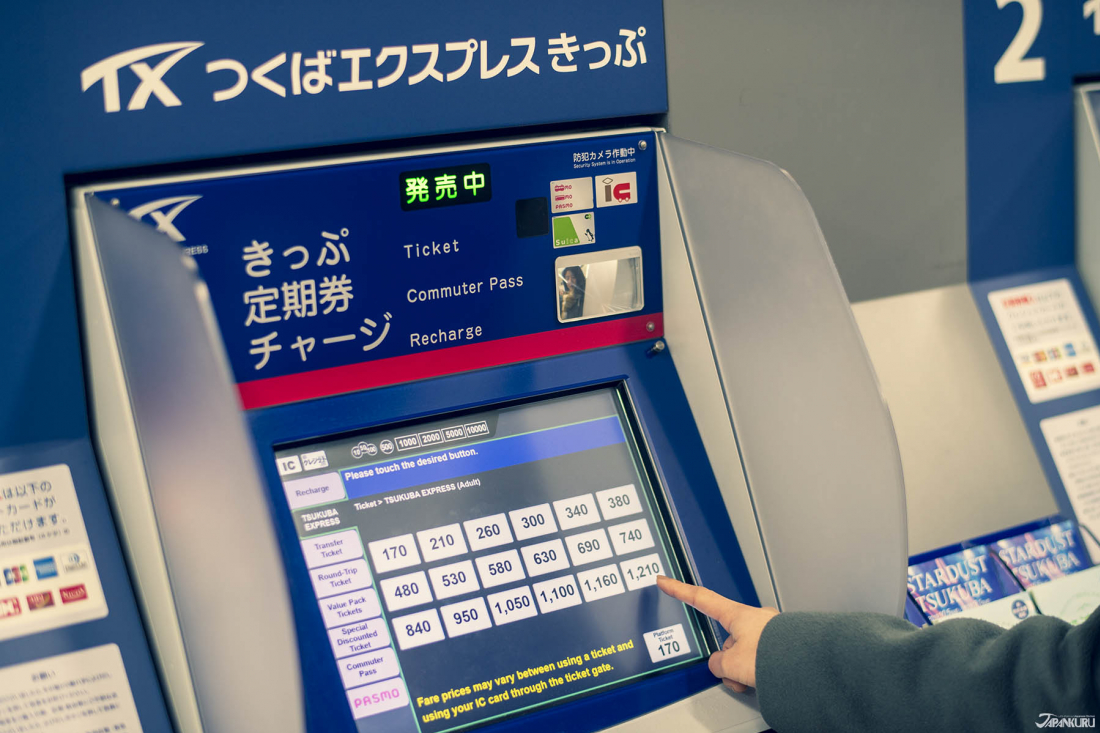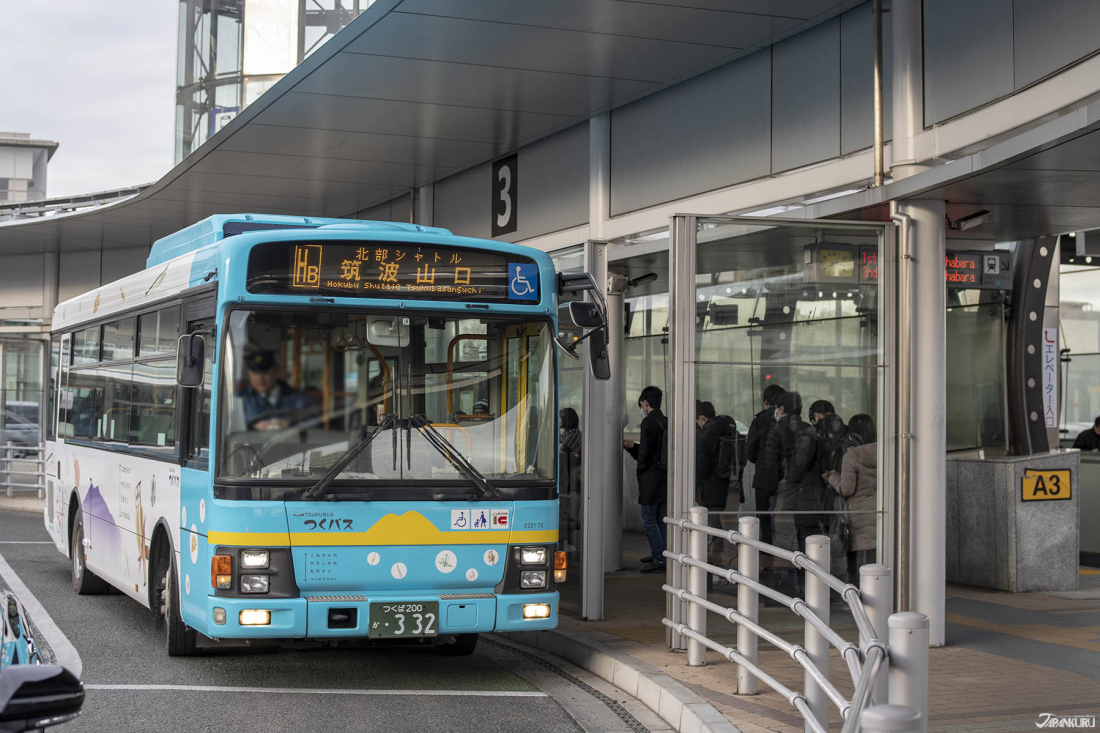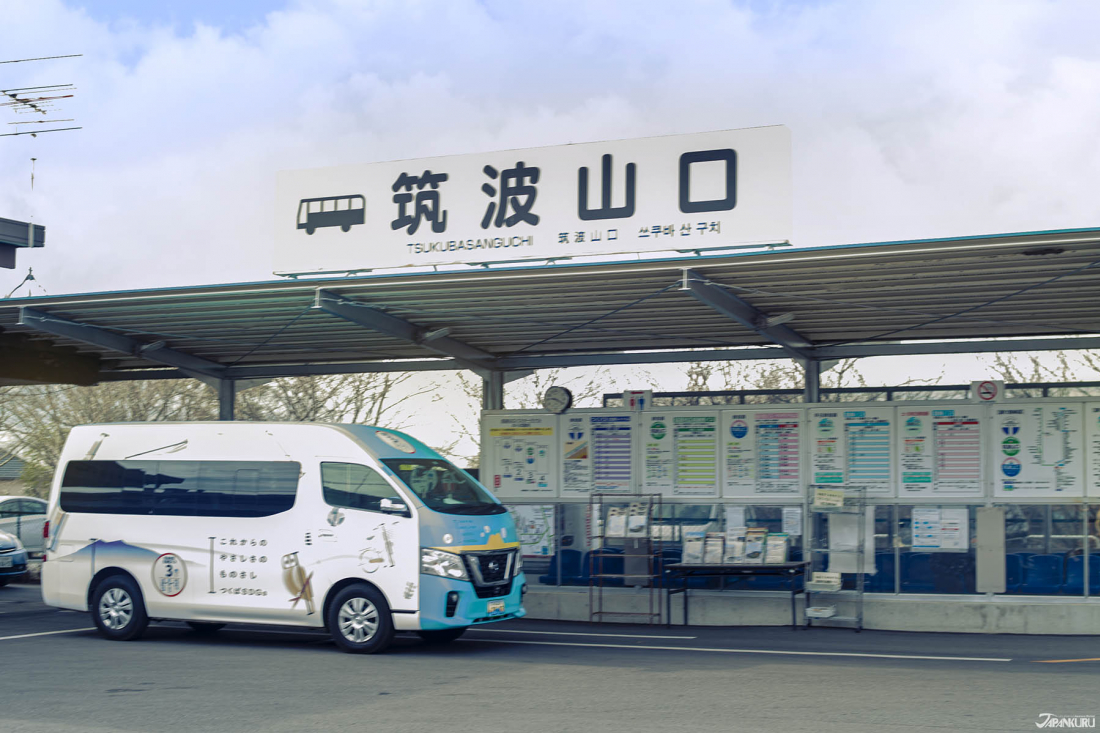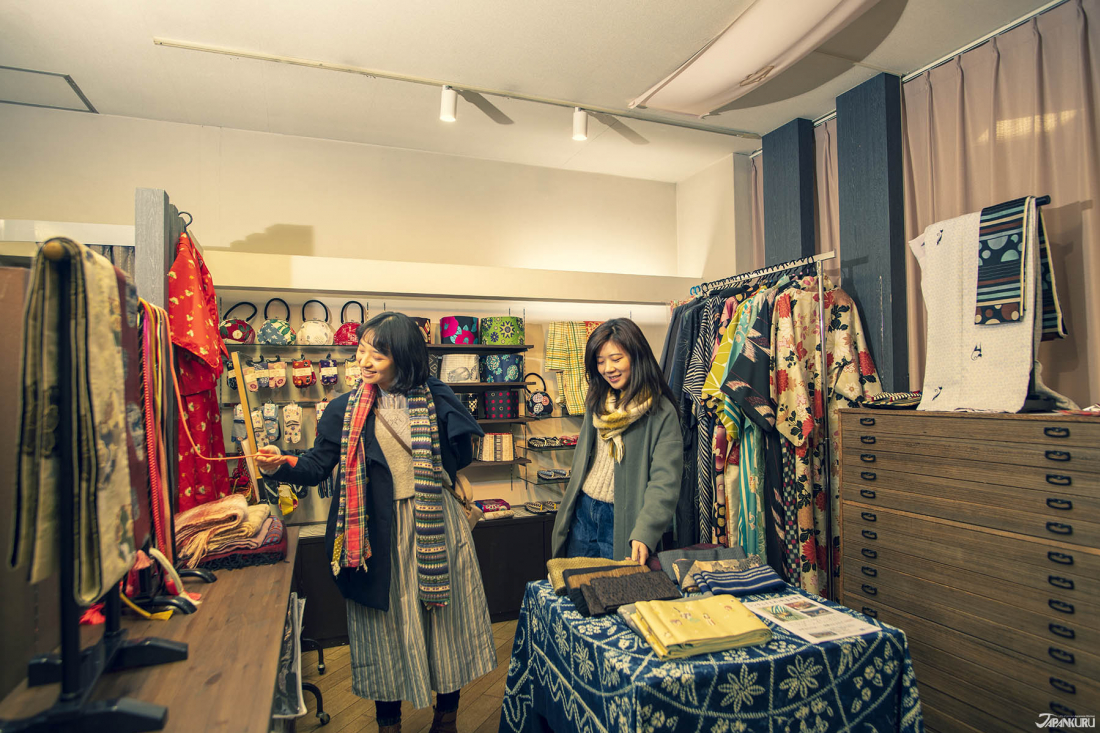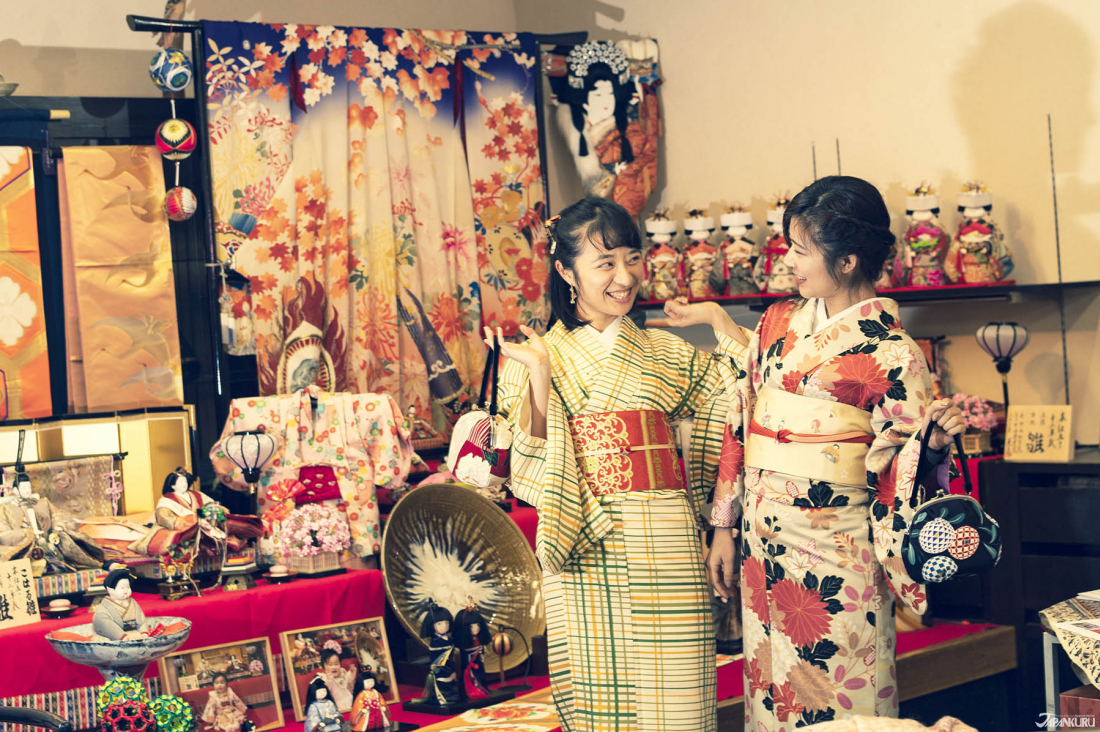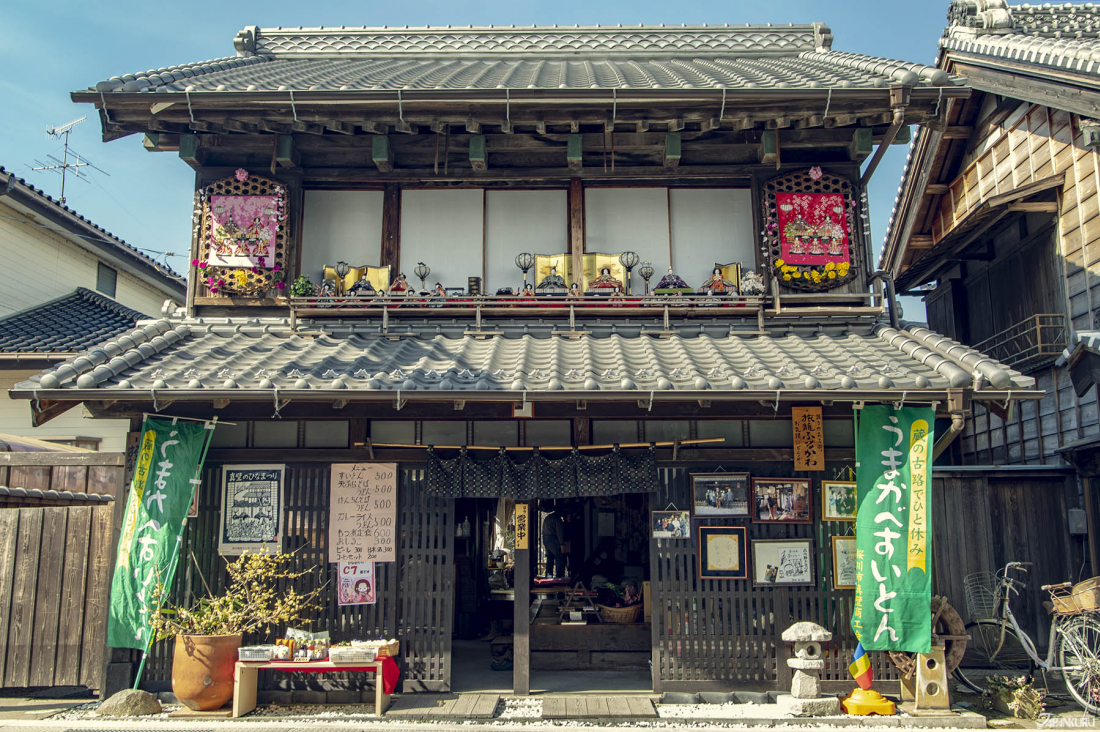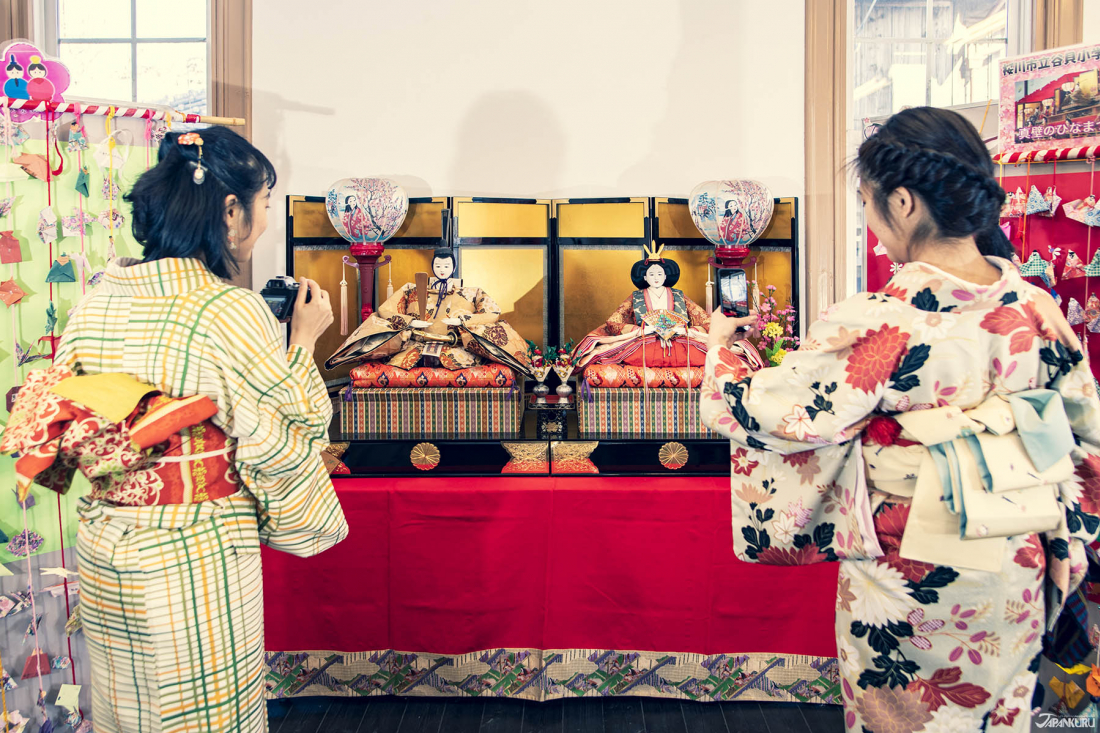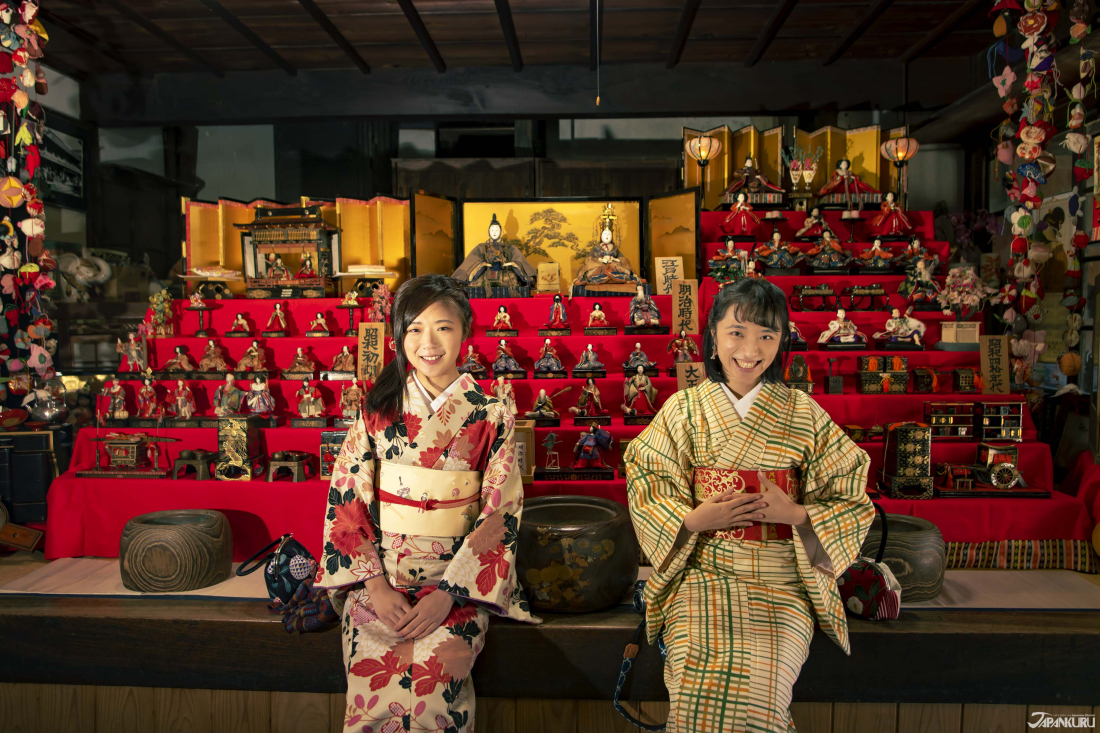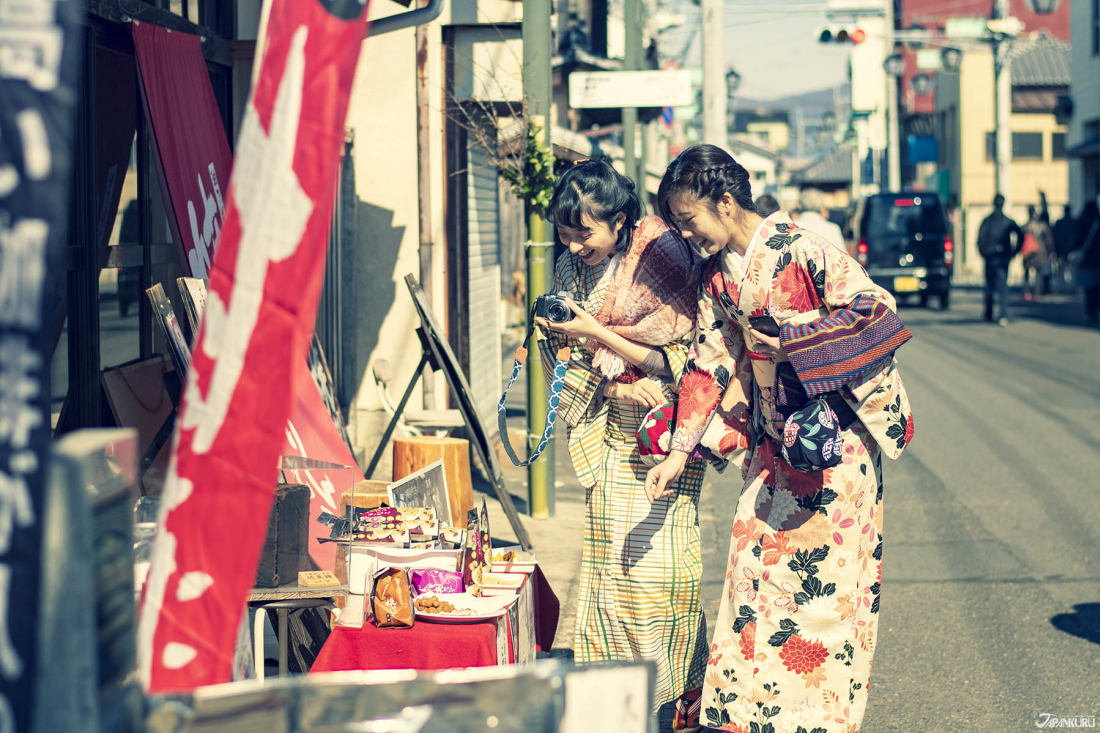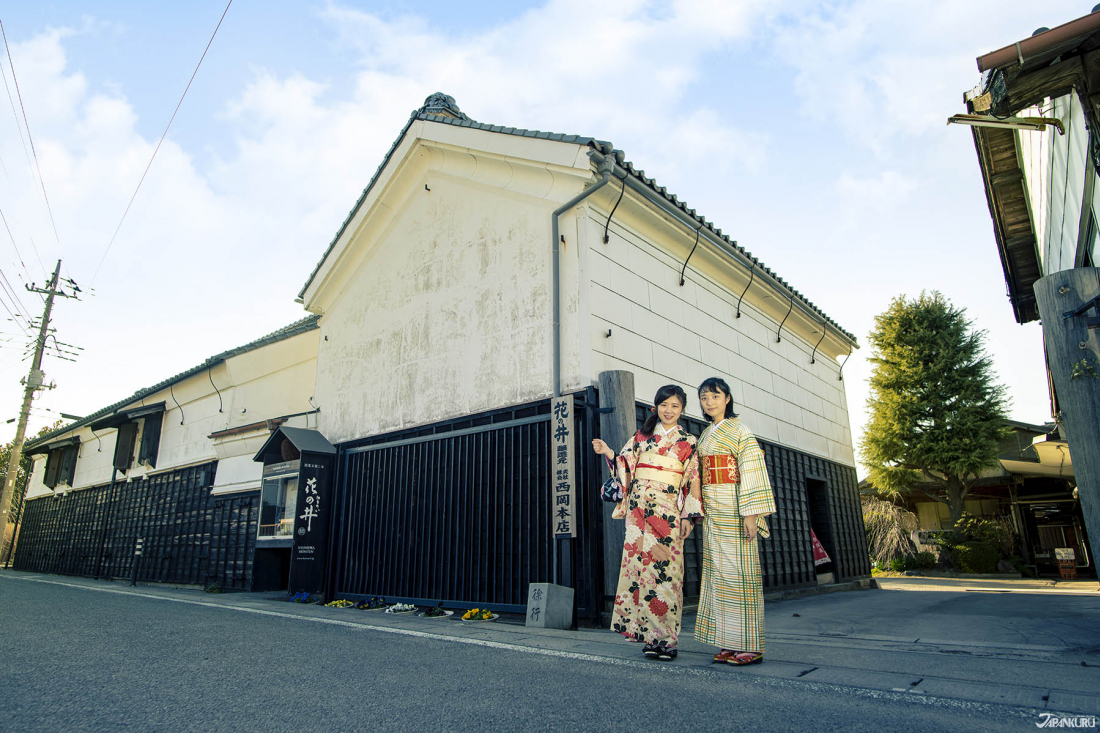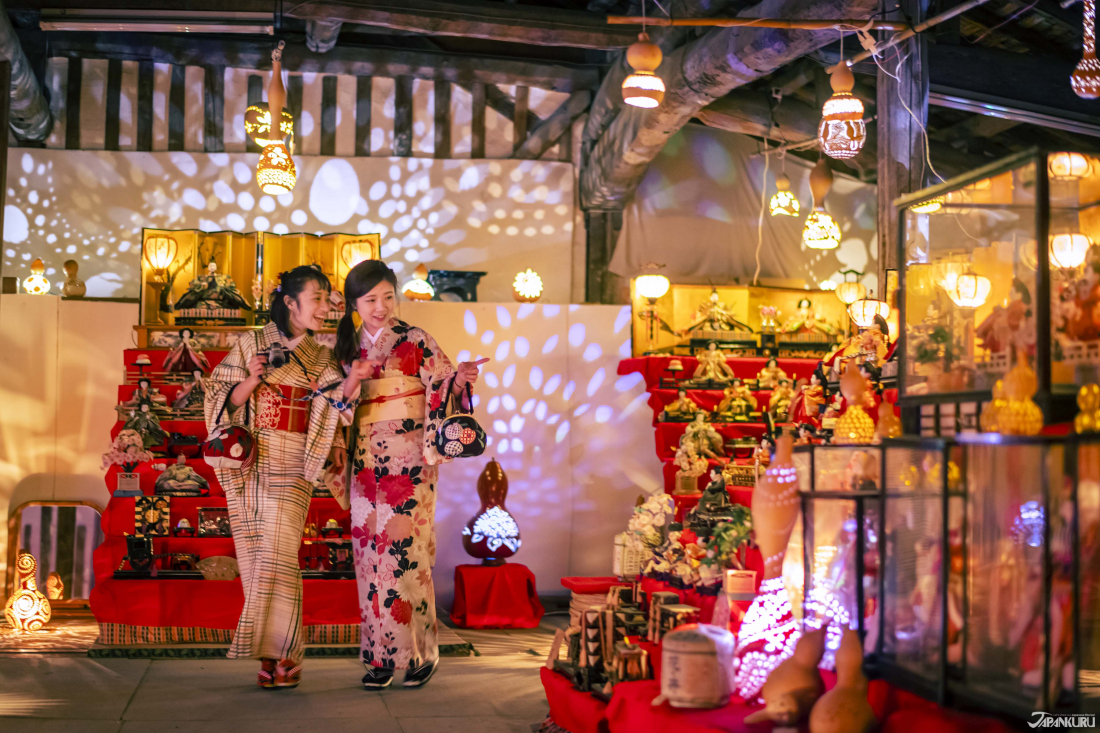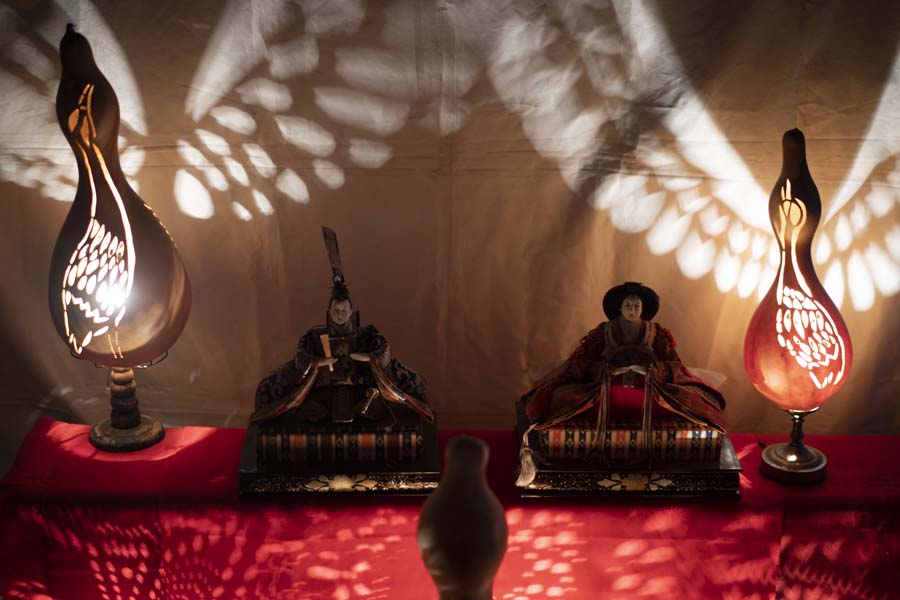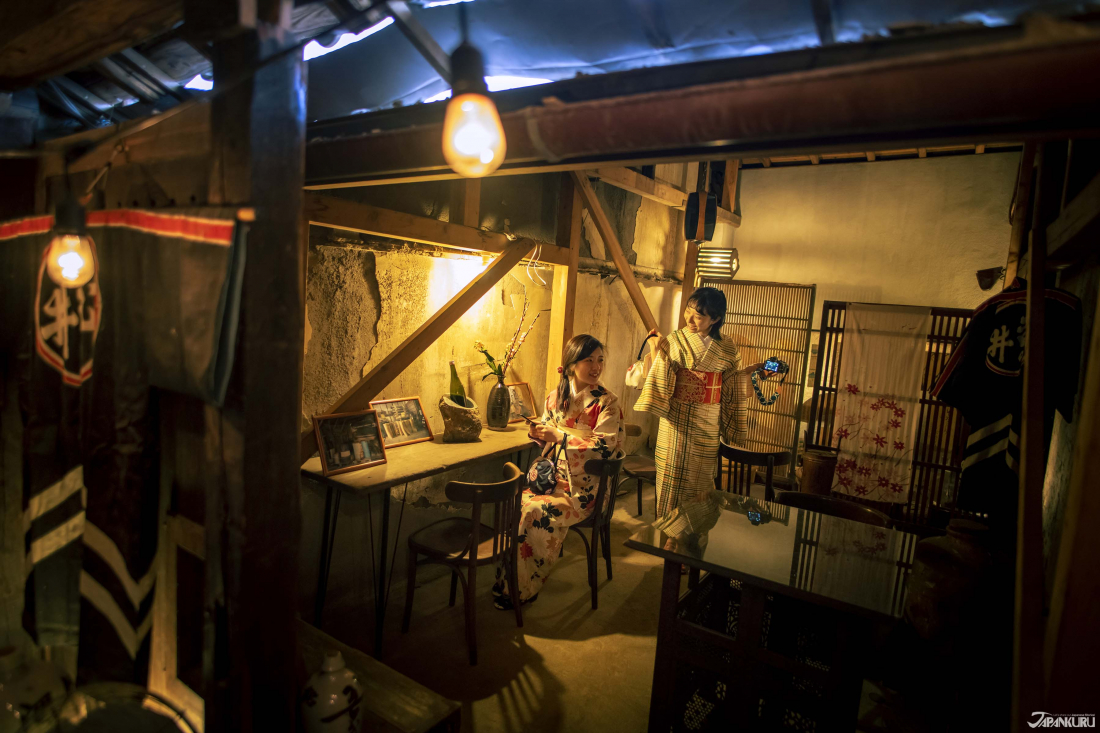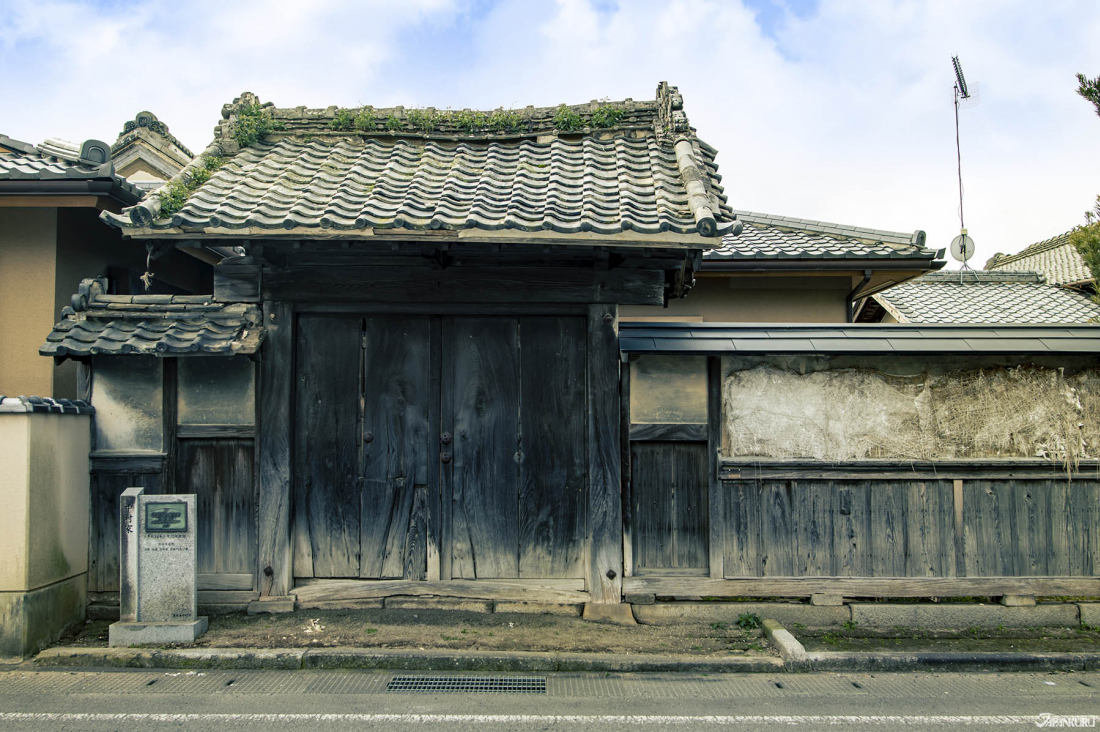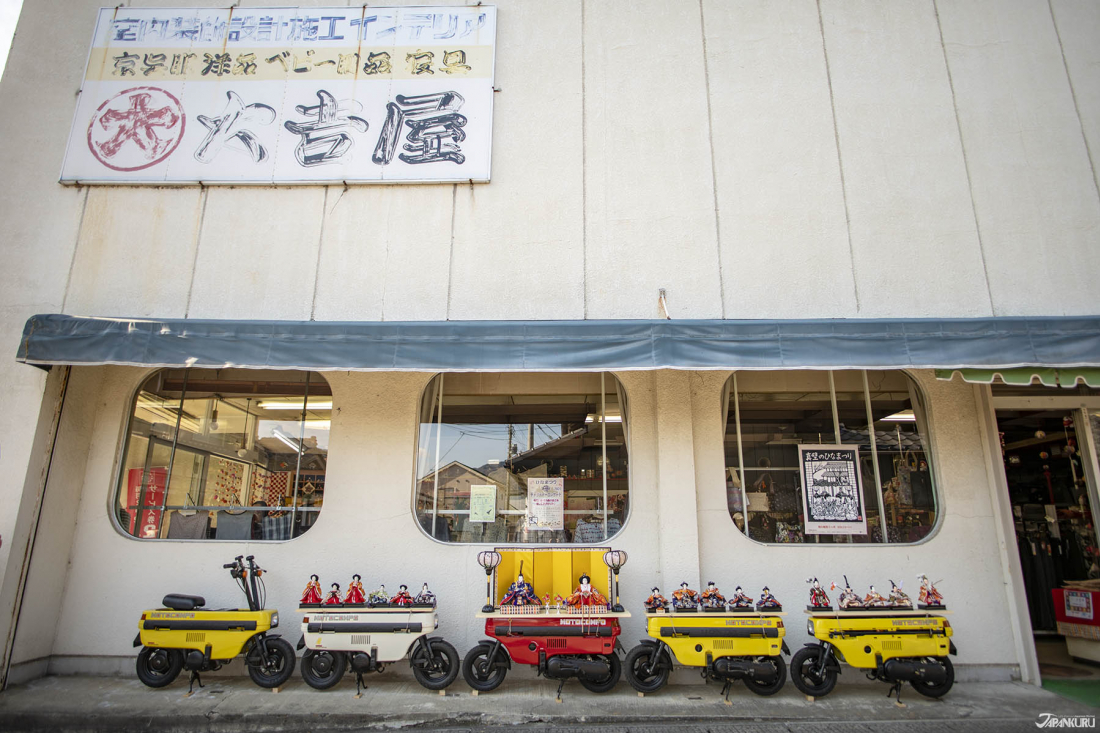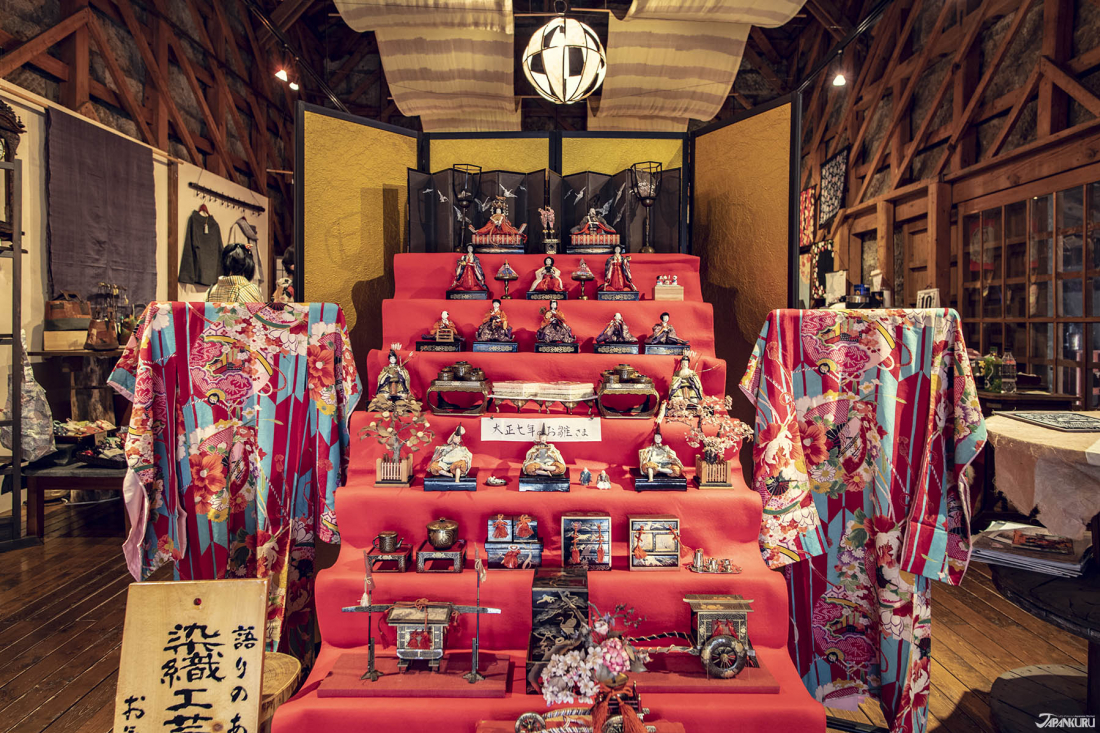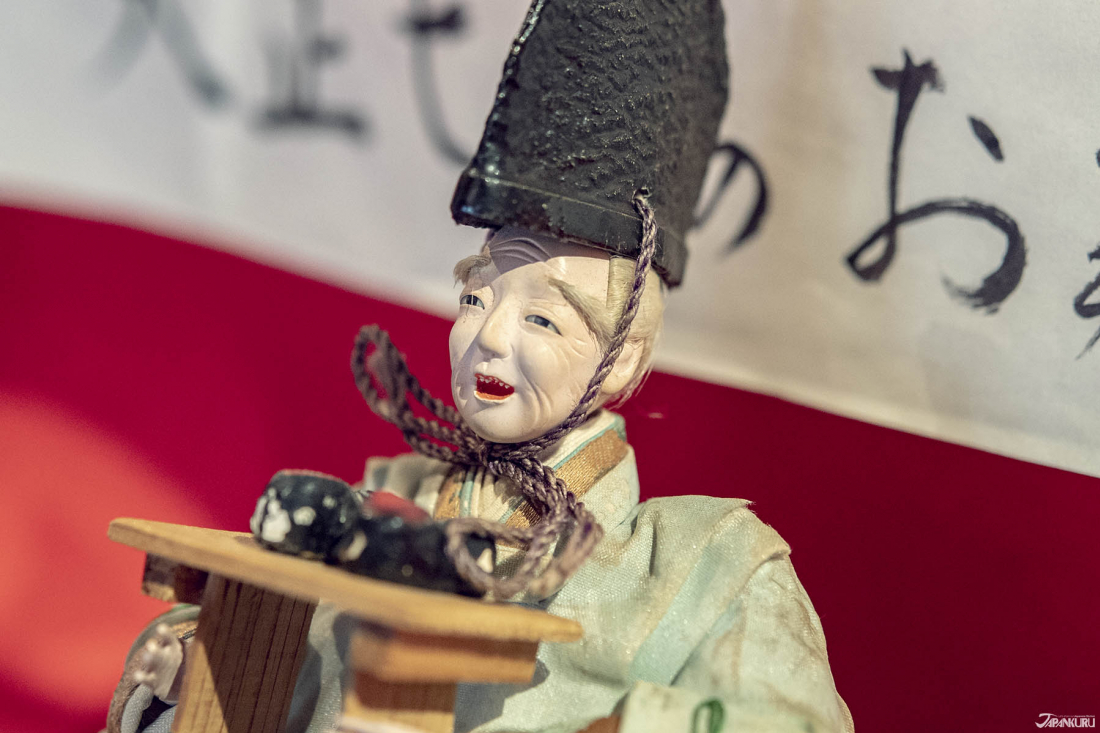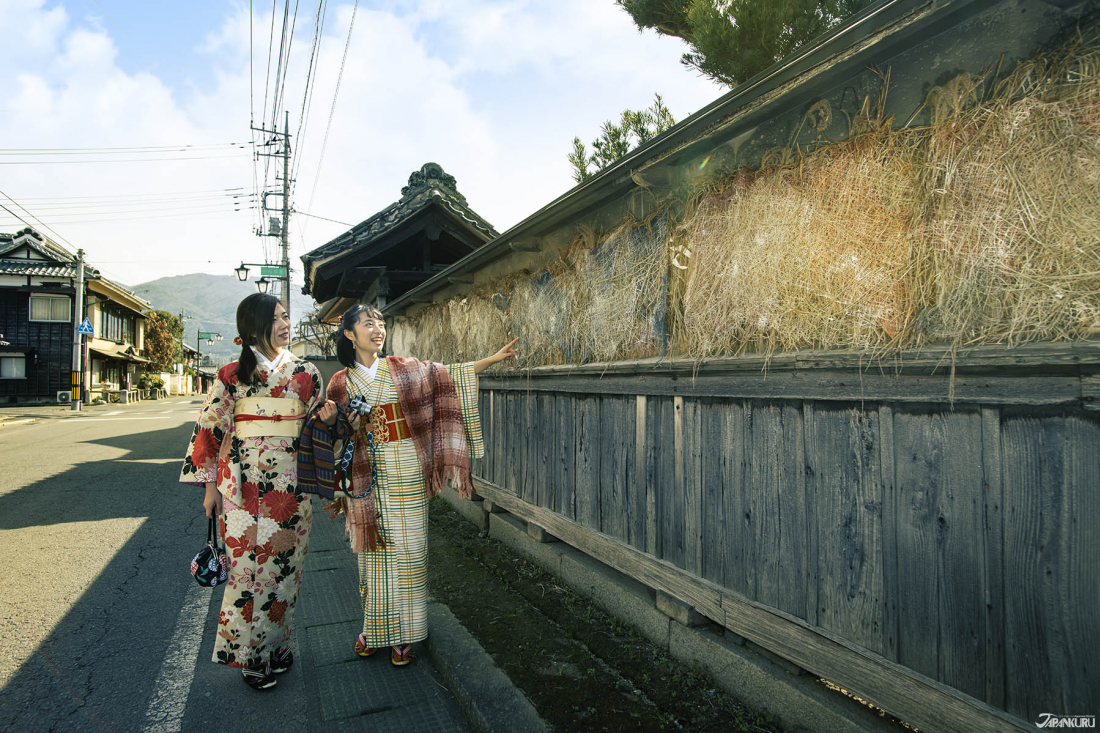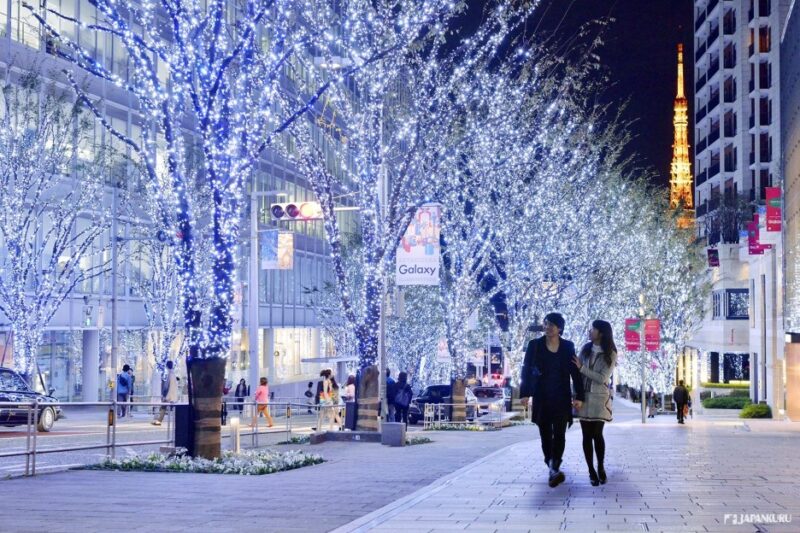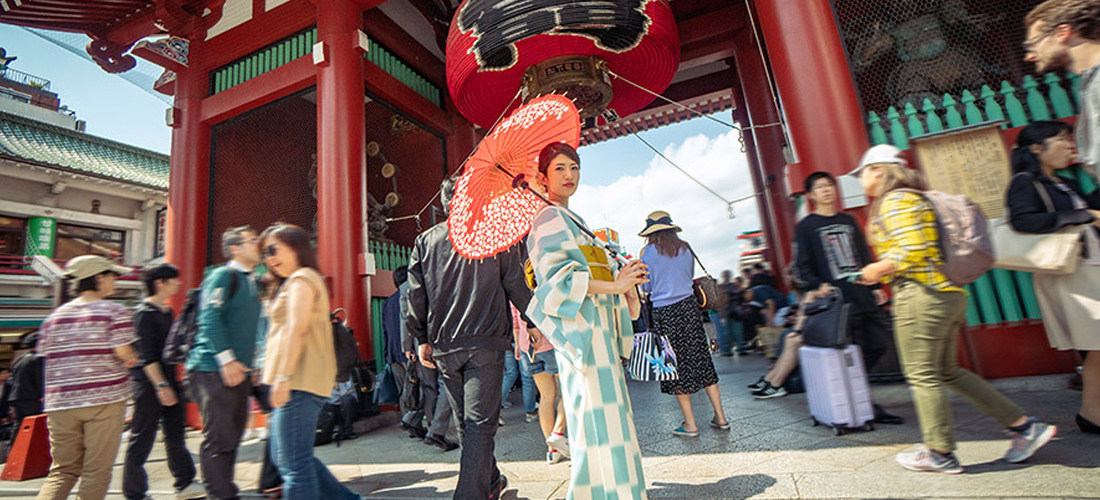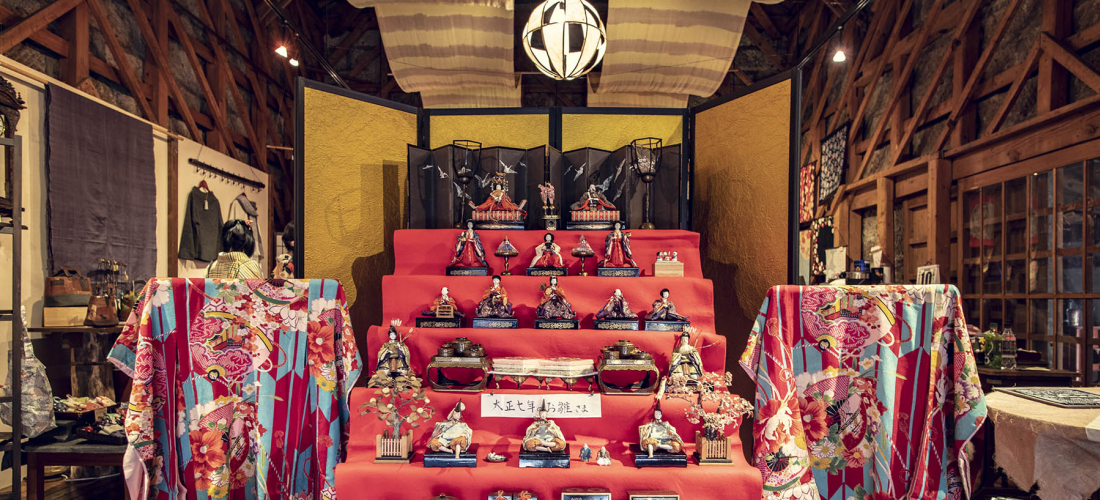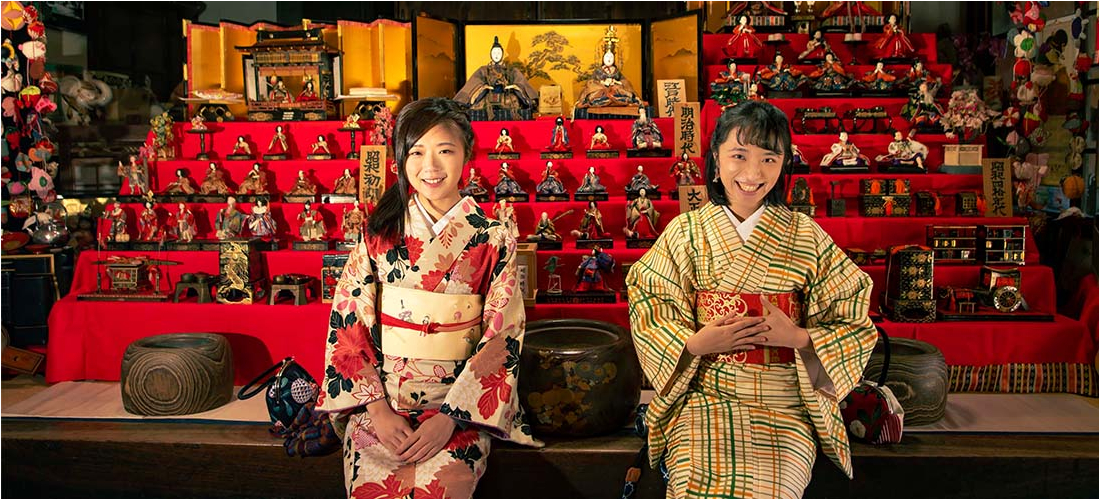
CONTENTS
The perfect off-the-beaten-path day-trip from Tokyo, the Makabe area of Sakuragawa City in Ibaraki is a little village in the foothills of Mt. Tsukuba peppered with hundreds of historic buildings and national tangible cultural properties. Quaint and sleepy for most of the year, it truly shines in the month leading up to Japan’s Hinamatsuri Festival, so here at JAPANKURU we knew we had to hop on Tsukuba Express and go check it out.
Heading to Ibaraki with Tsukuba Express
Hinamatsuri is a Japanese festival with a history of over 1,000 years, sometimes called Girls' Day, where families with daughters decorate their homes using sets of traditional dolls, symbolizing their hopes for the children's bright futures. These dolls are still made by hand and machine all over Japan, including by the artisans in nearby Saitama, but this spring the JAPANKURU team wanted to visit one of the best spots to see them on display! Makabe's yearly Hinamatsuri Festival celebrations include Hina doll displays (or ひな人形, "Hina ningyo" displays) all over the town, with dolls new and old, elegant and unusual, common and extremely rare – and they're all on display for a whole month, from Feb. 4th to Mar. 3rd in 2020.
Head on over before the festival ends!
We knew we had to check out the festival as soon as possible! Really getting out into the countryside can be tough for travelers visiting Japan, but we had a pretty easy time finding our way over. This time, we started at Tsukuba Express Akihabara Station, the train's terminal, although travelers staying in Asakusa can also start their journey at the Tsukuba Express Asakusa Station.
Since we were leaving from Akihabara in the morning, there were plenty of empty seats, so we sat back and relaxed as the Tsukuba Express train took us all the way to the end of the line.
After arriving at Tsukuba Station we took the escalator up to exit A3, and into the fresh outside air. Our next destination, the bus stop, was right in front of our eyes! A couple different bus routes leave from this spot, so we were careful to line up for the Tsuku-bus Kitabu Shuttle (つくバス 北部シャトル).
The shuttle took us to Tsukubasanguchi bus stop, where we were able to quickly transfer to our final bus, a Yamazakura Go Sakuragawa City Bus, which was pink and decorated with some local mascots! If you ask for a transfer slip from the first bus driver as you get off (called a "noritsugi waribikiken", or 乗継割引券), they'll give you a little piece of paper that gives you a discount on the second ride as long as you pay in cash, so don't make the mistake of paying with IC cards like us. (Whoops!)
And we made it! Since we headed over during the earlier days of the Makabe Hinamatsuri Festival, we were able to get off the bus right in the middle of things, at Shimojuku bus stop. During some of the busier days of the festival, vehicle access to the central area is limited, so the bus stops at a stop that's a few minutes walk away, Sakuragawa City Hall bus stop.
Bus goes all the way to Shimojuku: 2/4~2/21, 2/25~2/28, & 3/2~3/3
Bus stops at Sakuragawa City Hall: 2/22~2/24, 2/29~3/1
① Tsukuba Express Akihabara Station ⇒ Tsukuba Station (via Tsukuba Express Train)
② Tsukuba Station ⇒ Tsukubasanguchi Bus Stop (via Tsuku-bus Kitabu Shuttle)
③ Tsukubasanguchi Bus Stop ⇒ Shimojuku Bus Stop (via Sakuragawa City Bus)
But First – Kimono Rentals!
Going on this excursion out of Tokyo, we wanted to make the most of our time in Ibaraki, so we decided to get into the spirit of things by exploring Makabe wearing kimono! (Fortunately, they were not just thin cotton yukata, so we were comfortably warm in the cool February weather.)
We walked just a couple minutes from Shimojuku bus stop to Edohatsu, a shop that offers kimono for sale, kimono repairs, kimono lessons, and of course kimono rentals! With so many gorgeous options, picking out the perfect kimono and obi (belt) combination turned out to be surprisingly difficult, but the staff really helped us, letting us drape on lots of different kimono, until we finally arrived at some great outfits. Considering how affordable the rental price is, we were moved by the dedication and great service we got from the friendly shop staff. Finally, after taking a trip to the shop's second floor to get dressed by a kimono expert, we were ready to go on our way and see the sights of the festival!
Edohatsu (江戸初)
376 Makabecho Makabe, Sakuragawa, Ibaraki
Hours: 10:00 – 19:00 (closed Wednesdays)
Kimono Rental: 3,900 yen
Official Website (jp)
Celebrating the Makabe Hinamatsuri Festival
The Many Sights of Gojinyamae St
Gojinyamae St (御陣屋前通り) is arguably the center of activity in Makabe, with restaurants, souvenir and sweets stores, and plenty of Hina dolls to feast your eyes on.
There were truly dolls displayed everywhere we looked – including this impressive rooftop setup on top of an inn & restaurant, with dolls from 1970!
Hatago Furukawa (旅籠ふるかわ)
300 Makabecho Makabe, Sakuragawa, Ibaraki
We were charmed by this building that is now something of a symbol of the area. It was once a bank, and then a post office, and now uses the old-fashioned teller windows to display Hina dolls during the festival! Take a look inside – the building has kind of turned into a tourist information center, where friendly locals can give you a little bit of guidance and some recommendations. Plus, they've got a couple of especially large Hina dolls on display, as well.
Old Makabe Post Office (旧真壁郵便局)
297 Makabecho Makabe, Sakuragawa, Ibaraki
While you wouldn't know from the street, the Hina dolls on display right inside the Shiota Family house are some of the area's more impressive models, thanks in large part to their venerable age. They were some of the oldest dolls we saw all day; some of them are even from the Edo era, which means they're at least 150 years old! We were shocked to find out, since the dolls still look as good as new! Other dolls in the same room were a little newer, but still very special – they were bought for the house's current owner (now an older woman) when she was a little girl.
Shiota Family House (潮田家)
189 Makabecho Makabe, Sakuragawa, Ibaraki
If you start feeling a little bit of a chill, we recommend you pick up some amazake (a sweet fermented rice drink prepared a little like standard sake, but extremely low-alcohol) sold right nearby. It's often drunk hot, which makes it the perfect thing to warm you right up (and warm chilled fingers)! We found it at Hanakomichi, which specializes in sweet yakikarinto snacks (that we also got a little addicted to)!
Hanakomichi Yakikarinto (花小路 焼きかりんとう)
Makabecho Makabe, Sakuragawa, Ibaraki
The Unique Displays of Hananoi Brewery
A little apart from Makabe's old town area is the Hananoi Brewery, run by Nishioka Honten, a sake brewery in business since the late 1700s. Interestingly, the brewery sets up some fascinating displays during the Hinamatsuri Festival.
At first we were a little confused about what we were walking into, exploring the brewery grounds. But after searching around a little, next to the sake tasting area we found what looks like a contemporary art installation, all surrounding a fairly traditional Hina doll display. Tasting some high-quality Japanese sake and wandering into this unique series of rooms was kind of an unexpected treat for our group!
In a little side building inside the same complex is another display that was both equally impressive, and completely different from the first one. This building had the overhead lights turned out, but was colorfully lit by lanterns in every corner of the room, all carved out of Japanese "hyotan" (ひょうたん) gourds. This traditional craft, which requires steady hands and incredible skill, was on display all over the little shed, and all the little specks of light worked together to illuminate even more Hinamatsuri dolls. Some dolls were placed carefully on pedestals, and others inside enormous music boxes! It was all a little magical.
Hananoi Sake Brewery, Nishioka Honten (花の井蔵元 西岡本店)
6-1 Ta, Makabecho, Sakuragawa, Ibaraki
Official Website (en)
Break Time!
We'd heard before arriving that Makabe had some excellent udon and soba, and that the kakiage udon (udon with a fried mix of vegetables and sometimes seafood on top) was especially worth trying. Unfortunately, our first attempt to try it failed, and we were only able to look around the empty shop! It turns out the restaurant we wanted to visit is always closed during January and February (and August), so we hope a reader will visit in March and let us know how it is!
Banitei Yoshi (馬荷亭「㐂」)
170 Sakurai, Makabecho Makabe, Sakuragawa, Ibaraki
Hours: 11:00 – 13:00 (closed January, February, August)
Then again, the soba and udon, topped with either kakiage or kenchin (a mix of daikon radish, burdock root, carrot, mushrooms, and tofu), found at a little restaurant inside the Shiota Family house was pretty delicious! The warm soup and beautifully chewy noodles had us feeling full, recharged, and ready to see more of Makabe.
The Beautiful and Unusual Hina Dolls Found in Every Corner of Makabe
Walking through the old streets of this once-upon-a-time Japanese castle town that still uses the same street plan as 400 years ago, it seemed like every other building we passed was a historical structure or even a registered tangible cultural property. And everywhere we looked there were Hina dolls, from little ones hiding on street corners, to huge shelves of them right inside the open doorways of homes and shops. We loved just strolling through the totally unique Makabe atmosphere.
Approaching this little shop we knew were in for something good when we saw the unusual motorbikes lined up outside… and then noticed the dolls placed on top!
The dolls inside, riding their very own motorbikes and police cars, were also pretty good. You won't see a rare Hina doll setup like this just anywhere!
Daikichiya (大吉屋)
256 Makabecho Makabe, Sakuragawa, Ibaraki
Walking down a quiet side street, the many, many dolls in this one former storefront stood out to us, and the building's owner came downstairs to find us peering in at them. It turns out the store used to specialize in traditional Japanese shoes called geta (下駄), and the dolls sit where shoe soles were once lined up on display for customers. The fabric shoe tops hung from the ceiling, so customers could mix and match!
Sekine Family House (関根家)
390 Makabecho Makabe, Sakuragawa, Ibaraki
These delicate little dolls have been in the family since 1918, when the current shop owner's grandfather saw them during a trip to Tokyo, and was so charmed by the delicate sculpting of the limbs and the great facial expressions on the dolls that he had to bring them home. They were already considered high quality, (and pricey!) at purchase, and they've now survived over 100 years totally unscathed!
The expressions really are something to behold!
Kurafuto (蔵布都)
199 Makabecho Makabe, Sakuragawa, Ibaraki
Finding Our Way Back Home
And all too soon, it was time to wrap up our tour of Makabe and head back home. We scurried back to Edohatsu and changed back into our mundane everyday clothes, then walked back over to the bus stop to catch the last connecting bus leaving the area. From Shimojuku bus stop to Tsukubasanguchi bus stop, then back to Tsukuba Station, and finally returning to Akihabara on the speedy Tsukuba Express, we did the whole process in reverse, and were home all too soon.
If you're up for a little day trip adventure into the northern outskirts of the Tokyo area, away from the hustle and bustle of city life and into an area steeped in history, we recommend you follow our lead and head to Makabe! Thanks to the quick Tsukuba Express trains that run deep into Ibaraki in no time, it was a simple enough excursion, and a totally unique experience. Immerse yourself in Japanese culture while you're here, and head to Makabe's Hinamatsuri Festival!
Then let us know how it goes! Or drop us a line if you need any help planning your trip to Ibaraki, on twitter, instagram, and facebook!
See you again soon, Ibaraki!
Details
NAME:Tsukuba Express Akihabara Station → Makabe Hina Matsuri
MAP
COMMENT
FEATURED MEDIA
VIEW MORE 
A New Tokyo Animal Destination: Relax & Learn About the World’s Animals in Japan
#pr #japankuru #anitouch #anitouchtokyodome #capybara #capybaracafe #animalcafe #tokyotrip #japantrip #카피바라 #애니터치 #아이와가볼만한곳 #도쿄여행 #가족여행 #東京旅遊 #東京親子景點 #日本動物互動體驗 #水豚泡澡 #東京巨蛋城 #เที่ยวญี่ปุ่น2025 #ที่เที่ยวครอบครัว #สวนสัตว์ในร่ม #TokyoDomeCity #anitouchtokyodome

Shohei Ohtani Collab Developed Products & Other Japanese Drugstore Recommendations From Kowa
#pr #japankuru
#kowa #syncronkowa #japanshopping #preworkout #postworkout #tokyoshopping #japantrip #일본쇼핑 #일본이온음료 #오타니 #오타니쇼헤이 #코와 #興和 #日本必買 #日本旅遊 #運動補充能量 #運動飲品 #ช้อปปิ้งญี่ปุ่น #เครื่องดื่มออกกำลังกาย #นักกีฬา #ผลิตภัณฑ์ญี่ปุ่น #อาหารเสริมญี่ปุ่น

도쿄 근교 당일치기 여행 추천! 작은 에도라 불리는 ‘가와고에’
세이부 ‘가와고에 패스(디지털)’ 하나면 편리하게 이동 + 가성비까지 완벽하게! 필름카메라 감성 가득한 레트로 거리 길거리 먹방부터 귀여움 끝판왕 핫플&포토 스폿까지 총집합!
Looking for day trips from Tokyo? Try Kawagoe, AKA Little Edo!
Use the SEIBU KAWAGOE PASS (Digital) for easy, affordable transportation!
Check out the historic streets of Kawagoe for some great street food and plenty of picturesque retro photo ops.
#pr #japankuru #도쿄근교여행 #가와고에 #가와고에패스 #세이부패스 #기모노체험 #가와고에여행 #도쿄여행코스 #도쿄근교당일치기 #세이부가와고에패스
#tokyotrip #kawagoe #tokyodaytrip #seibukawagoepass #kimono #japantrip

Hirakata Park, Osaka: Enjoy the Classic Japanese Theme Park Experience!
#pr #japankuru #hirakatapark #amusementpark #japantrip #osakatrip #familytrip #rollercoaster #retrôvibes #枚方公園 #大阪旅遊 #關西私房景點 #日本親子旅行 #日本遊樂園 #木造雲霄飛車 #히라카타파크 #สวนสนุกฮิราคาตะพาร์ค

🍵Love Matcha? Upgrade Your Matcha Experience With Tsujiri!
・160년 전통 일본 말차 브랜드 츠지리에서 말차 덕후들이 픽한 인기템만 골라봤어요
・抹茶控的天堂!甜點、餅乾、飲品一次滿足,連伴手禮都幫你列好清單了
・ส่องมัทฉะสุดฮิต พร้อมพาเที่ยวร้านดังในอุจิ เกียวโต
#pr #japankuru #matcha #matchalover #uji #kyoto #japantrip #ujimatcha #matchalatte #matchasweets #tsujiri #말차 #말차덕후 #츠지리 #교토여행 #말차라떼 #辻利抹茶 #抹茶控 #日本抹茶 #宇治 #宇治抹茶 #日本伴手禮 #抹茶拿鐵 #抹茶甜點 #มัทฉะ #ของฝากญี่ปุ่น #ชาเขียวญี่ปุ่น #ซึจิริ #เกียวโต

・What Is Nenaito? And How Does This Sleep Care Supplement Work?
・你的睡眠保健品——認識「睡眠茶氨酸錠」
・수면 케어 서플리먼트 ‘네나이토’란?
・ผลิตภัณฑ์เสริมอาหารดูแลการนอน “Nenaito(ネナイト)” คืออะไร?
#pr #japankuru #sleepcare #japanshopping #nenaito #sleepsupplement #asahi #睡眠茶氨酸錠 #睡眠保健 #朝日 #l茶胺酸 #日本藥妝 #日本必買 #일본쇼핑 #수면 #건강하자 #네나이토 #일본영양제 #อาหารเสริมญี่ปุ่น #ช้อปปิ้งญี่ปุ่น #ร้านขายยาญี่ปุ่น #ดูแลตัวเองก่อนนอน #อาซาฮิ

Japanese Drugstore Must-Buys! Essential Items from Hisamitsu® Pharmaceutical
#PR #japankuru #hisamitsu #salonpas #feitas #hisamitsupharmaceutical #japanshopping #tokyoshopping #traveltips #japanhaul #japantrip #japantravel

Whether you grew up with Dragon Ball or you just fell in love with Dragon Ball DAIMA, you'll like the newest JINS collab. Shop this limited-edition Dragon Ball accessory collection to find some of the best Dragon Ball merchandise in Japan!
>> Find out more at Japankuru.com! (link in bio)
#japankuru #dragonball #dragonballdaima #animecollab #japanshopping #jins #japaneseglasses #japantravel #animemerch #pr

This month, Japankuru teamed up with @official_korekoko to invite three influencers (originally from Thailand, China, and Taiwan) on a trip to Yokohama. Check out the article (in Chinese) on Japankuru.com for all of their travel tips and photography hints - and look forward to more cool collaborations coming soon!
【橫濱夜散策 x 教你怎麼拍出網美照 📸✨】
每次來日本玩,是不是都會先找旅日網紅的推薦清單?
這次,我們邀請擁有日本豐富旅遊經驗的🇹🇭泰國、🇨🇳中國、🇹🇼台灣網紅,帶你走進夜晚的橫濱!從玩樂路線到拍照技巧,教你怎麼拍出最美的夜景照。那些熟悉的景點,換個視角說不定會有新發現~快跟他們一起出發吧!
#japankuru #橫濱紅磚倉庫 #汽車道 #中華街 #yokohama #japankuru #橫濱紅磚倉庫 #汽車道 #中華街 #yokohama #yokohamaredbrickwarehouse #yokohamachinatown

If you’re a fan of Vivienne Westwood's Japanese designs, and you’re looking forward to shopping in Harajuku this summer, we’ve got important news for you. Vivienne Westwood RED LABEL Laforet Harajuku is now closed for renovations - but the grand reopening is scheduled for July!
>> Find out more at Japankuru.com! (link in bio)
#japankuru #viviennewestwood #harajuku #omotesando #viviennewestwoodredlabel #viviennewestwoodjapan #비비안웨스트우드 #오모테산도 #하라주쿠 #日本購物 #薇薇安魏斯伍德 #日本時尚 #原宿 #表參道 #japantrip #japanshopping #pr

Ready to see TeamLab in Kyoto!? At TeamLab Biovortex Kyoto, the collective is taking their acclaimed immersive art and bringing it to Japan's ancient capital. We can't wait to see it for ourselves this autumn!
>> Find out more at Japankuru.com! (link in bio)
#japankuru #teamlab #teamlabbiovortex #kyoto #kyototrip #japantravel #artnews
Photos courtesy of teamLab, Exhibition view of teamLab Biovortex Kyoto, 2025, Kyoto ® teamLab, courtesy Pace Gallery

Japanese Makeup Shopping • A Trip to Kamakura & Enoshima With Canmake’s Cool-Toned Summer Makeup
#pr #canmake #enoshima #enoden #에노시마 #캔메이크 #japanesemakeup #japanesecosmetics

⚔️The Robot Restaurant is gone, but the Samurai Restaurant is here to take its place. Check it out, and don't forget your coupon!
🍣신주쿠의 명소 로봇 레스토랑이 사무라이 레스토랑으로 부활! 절찬 쿠폰 발급중
💃18歲以上才能入場的歌舞秀,和你想的不一樣!拿好優惠券去看看~
#tokyo #shinjuku #samurairestaurant #robotrestaurant #tokyotrip #도쿄여행 #신주쿠 #사무라이레스토랑 #이색체험 #할인이벤트 #歌舞伎町 #東京景點 #武士餐廳 #日本表演 #日本文化體驗 #japankuru #japantrip #japantravel #japanlovers #japan_of_insta

Japanese appliance & electronics shopping with our KOJIMA x BicCamera coupon!
用JAPANKURU的KOJIMA x BicCamera優惠券買這些正好❤️
코지마 x 빅 카메라 쿠폰으로 일본 가전 제품 쇼핑하기
#pr #japankuru #japanshopping #kojima #biccamera #japaneseskincare #yaman #dji #osmopocket3 #skincaredevice #日本購物 #美容儀 #相機 #雅萌 #日本家電 #일본여행 #면세 #여행꿀팁 #일본쇼핑리스트 #쿠폰 #일본쇼핑 #일본브랜드 #할인 #코지마 #빅카메라 #japankurucoupon


